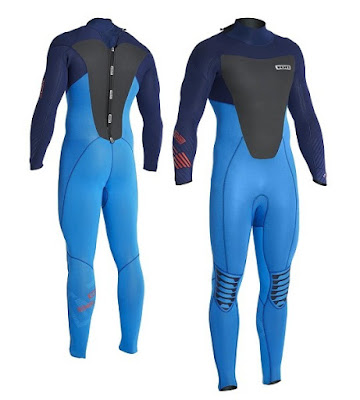A wetsuit is the protective garments worn to prevent loss of body heat while taking part in water sports. There are several thicknesses and fundamental designs for wetsuits established by the variety, or the severity of conditions or scenarios for use. In UK for instance, many marine sailors are going to have a variety of kinds of wetsuits to ensure they are suitably prepared and outfitted for each occasion. A wetsuit doesn't in fact keep water outside, unlike a drysuit. It uses your natural body's heat to keep the little layer of water and basically holds a little layer of water inside the suit, and you warm. Due to this, the fit of a wetsuit is essential; a wetsuit that's loose or too large will accumulate water, while one that's tight or too small will limit motion and be uncomfortable.

Wetsuits are arranged into a number of different body types. A total body wetsuit normally contains the accessory of a hood for the head and shields the legs, torso and arms. Wetsuits uk of this type are most appropriate to be used in places like the UK where cold water is usually common. A wetsuit with ¾ sleeves and legs, called a spring suit, is not inappropriate for waters that are warmer, but when you want a little additional protection. Wetsuits called shorties would be greatest. These have really short legs and arms but supply a complete torso protection. Additionally, there are versions of this like the sleeveless wetsuits. It has complete let and torso protection but has no sleeves, so your arm motion isn't limited. Wetsuits are created in two pieces, one piece or two varieties; the one piece wetsuits are less easy to put on but provide better protection than the two piece wetsuits. They are, thus, the better option for diving or surfing in cold waters in the UK.
The thickness of a wetsuit, may also change determined by the kind of wetsuit, and measured in millimeters. Wetsuits that are thicker limit range of motion but provide better protection from cold. Wetsuits that are thinner are better suited for warmer waters as they allow for more extensive variety of motion while providing insulation and protection for the body. This is more required for sailors and surfers who are required to proceed with agility in the water, or on the deck. Wetsuits can be made in a typical thickness or with extremities that are somewhat more slender than the torso.
Make sure you buy the right wetsuit to match the actions planned when picking a wetsuit. In addition, it's vital that you buy a wetsuit of outstanding quality from an established business like. Ensure the wetsuit bought will provide the protection you have by finding the average water temperature in the region in which you anticipate to go sailing out. For instance when in UK, consider buying thick wetsuits; as temperature there is normally cold. Consider getting a rash guard for your torso if you're planning on being in the water for long amounts of time. This can help you with potential aggravation from neoprene and the nylon. Also, you are going to feel much better after spending a whole day in a wetsuit when it is lined, so try and get a lined wetsuit. Seek the aid of sales staff in your choice of wetsuits and making sure your wetsuit fits correctly. Notice that most zippers in wetsuits run up the back which means that you simply may need help in putting on a wetsuit properly.
At this point, you have the proper instruments to locate your perfect wetsuit for any activity in any position, in case you are looking into a sailing wetsuit!


